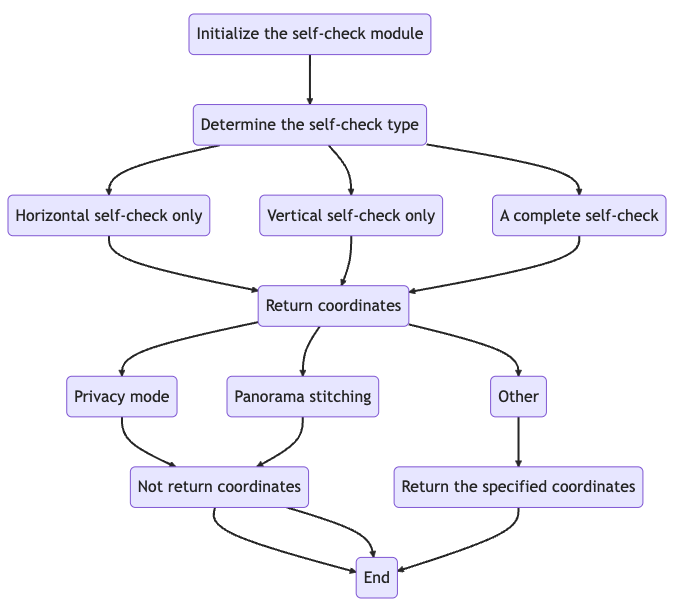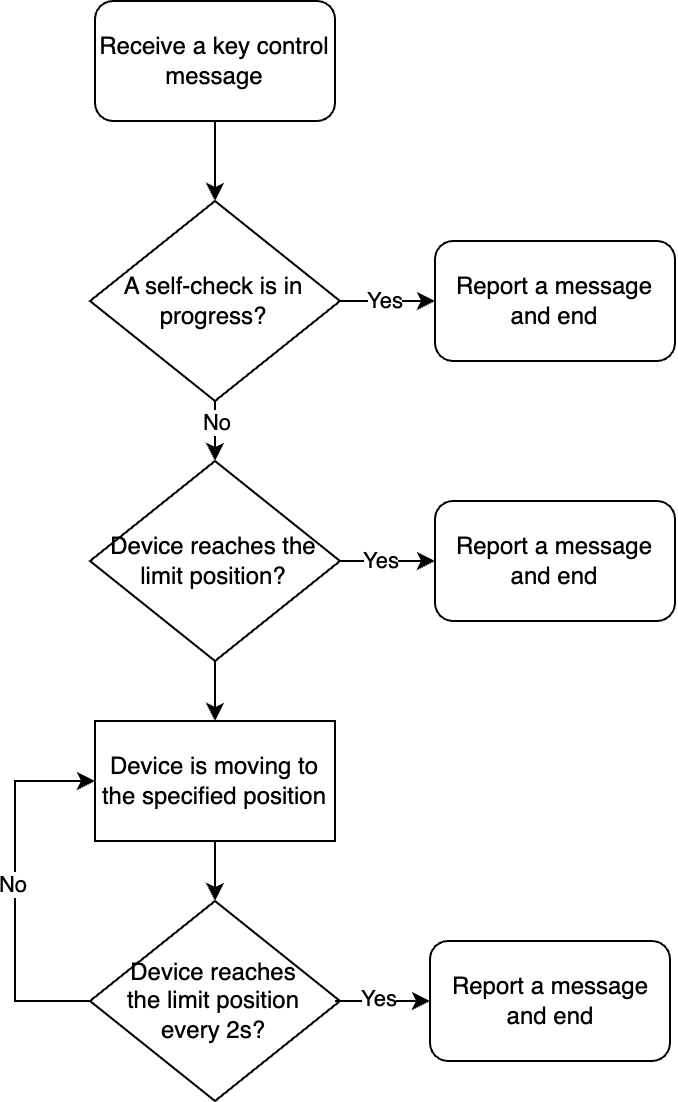Basic Features
Last Updated on : 2024-06-25 03:46:38download
The basic features of pan-tilt-zoom (PTZ) control include key control and self-check.
- Self-check: The essential feature of a PTZ module. The PTZ module performs a self-check on the PTZ coordinate for calibration. Self-check is the most important feature of a PTZ camera.
- Key control: The use of a virtual keypad on the mobile app to control the movement of the camera’s motor.
How it works
The PTZ module has two important threads:
-
Movement management thread: manages the movement of the PTZ and priority switching.
-
Message processing thread: handles the exchange of commands between the PTZ component and the external program.

```mermaid graph LR a("Movement processing thread") -- --> b("External") -- --> c("The message processing thread parses the message") c -- --> a c -- --> b ```
Self-check
Drive the motor to move in the direction of self-check at the maximum step size to reach the limit position, and then reset the current coordinates to zero.

```mermaid graph TD a("Initialize the self-check module") --> b("Determine the self-check type") --> c("Horizontal self-check only") --> d("Return coordinates") --> e("Privacy mode") --> f("Not return coordinates") --> g("End") --> h("Vertical self-check only") --> --> i("A complete self-check") --> --> j("Panorama stitching") --> --> --> k("Other") --> l("Return the specified coordinates") --> g ```
-
Cameras with an infinite position structure require a limit switch for self-check. Drive the motor to move in the direction of self-check until reaching the limit switch, then reset the current coordinates to zero. After the self-check, the camera returns to the position before the self-check.
-
If this is the first self-check after power on, the camera returns to the position before power off.
-
If this is the first self-check after pairing, the camera returns to the home position (horizontal and vertical intermediate position).
-
The following snippet shows the function to customize the self-check.
/** * @brief * @param[in] TY_SYS_PTZ_CHECK_MODE_E Self-check mode * @param[in] TY_SYS_PTZ_POS_TYPE_E The position the camera returns to after a patrol. * @retval void * @attention None. */ static void __ptz_check(TY_SYS_PTZ_CHECK_MODE_E mode, TY_SYS_PTZ_POS_TYPE_E back_type)
Key control

The user controls the keypad on the mobile app to send a DP command to the camera, which then moves accordingly.
The camera does not respond to key control in the following two cases:
- The camera is performing a self-check.
- The camera rotates to the maximum position.
Is this page helpful?
YesFeedbackIs this page helpful?
YesFeedback





